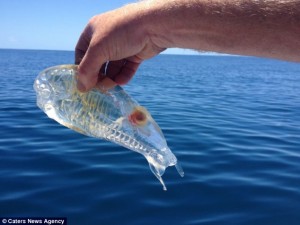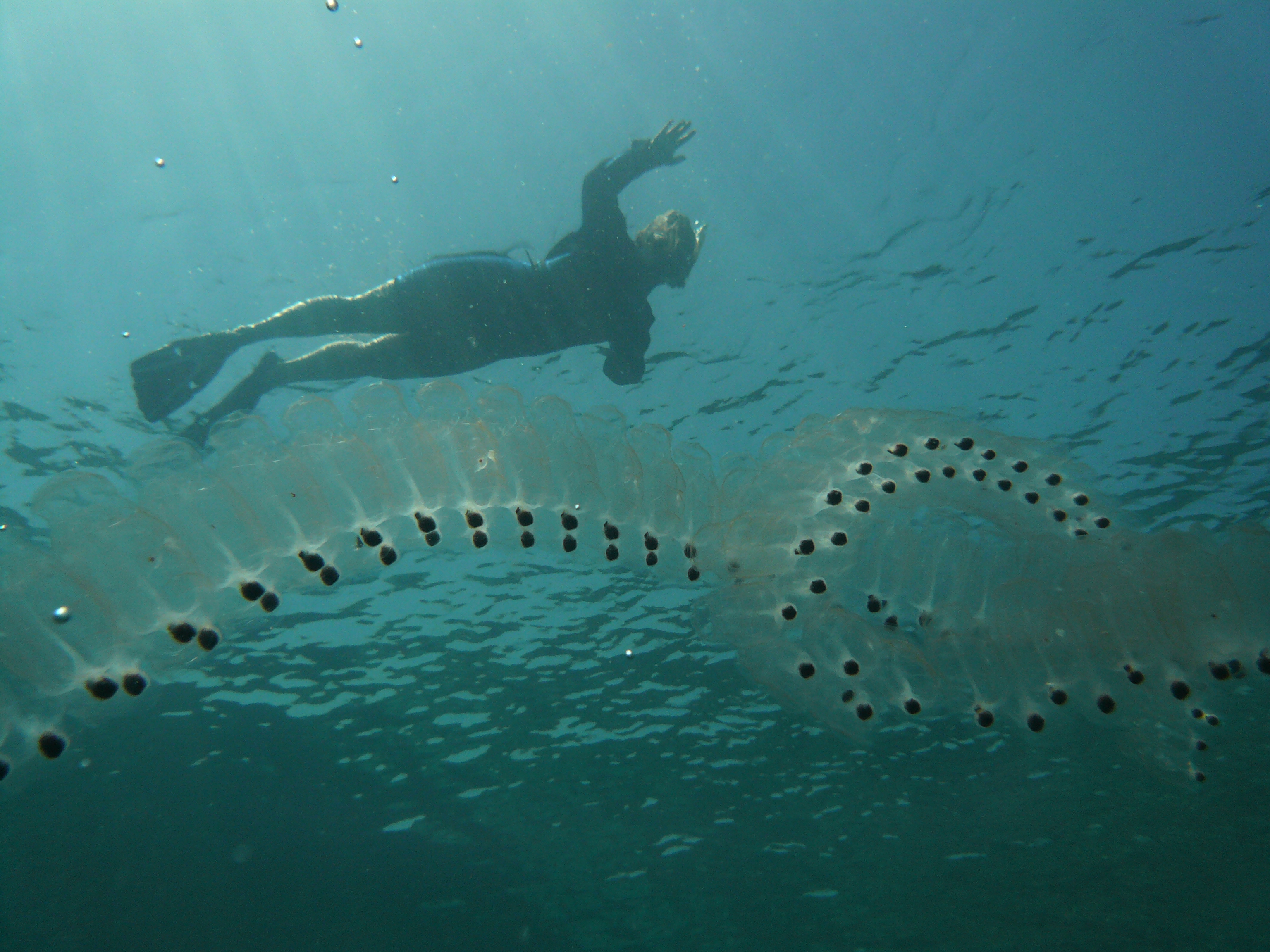“Translucent fish leaves New Zealand fisherman stunned” ~UK Metro
“Shrimp-like Translucent Sea Creature Found off Northland’s East Coast” ~Science World Report
“Now that’s a jelly fish! Stunned fisherman catches wobbly shrimp-like creature” ~Daily Mail
And another half-dozen variations on translucent, fish, shrimp, and baffled.
 This creature, whose image has gone viral in the last few days, is a salp. Salps are pelagic tunicates that drift through the open ocean, sometimes solitary, but often in large aggregations. It both swims and feed by pumping water through its body, filtering out plankton and expelling a jet of water from an organ called the excurrent siphon. In the water they look quite majestic.
This creature, whose image has gone viral in the last few days, is a salp. Salps are pelagic tunicates that drift through the open ocean, sometimes solitary, but often in large aggregations. It both swims and feed by pumping water through its body, filtering out plankton and expelling a jet of water from an organ called the excurrent siphon. In the water they look quite majestic.
